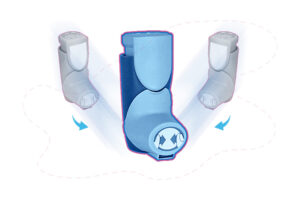Motorcycle Safety Courses in Ontario: Are They Worth It?
Let’s face it—riding a motorcycle looks easy until you actually get on one. It’s fun, freeing, and fast, but it also requires a sharp set of skills and a solid understanding of safety. That’s where motorcycle safety courses in Ontario come into play.
Whether you’re brand new to riding or just looking to brush up your technique, a proper motorcycle safety training course can transform how you ride—and not just from a skills perspective. It can also help reduce your insurance costs, improve your confidence, and make every ride safer.
In this post, we’ll dive into what these courses offer, why they’re essential in a province like Ontario, and whether they’re actually worth the money.
What Exactly Is a Motorcycle Safety Course?
A motorcycle safety course is a hands-on, instructor-led program designed to teach you how to ride safely and legally in Ontario. These programs are usually offered through:
- Community colleges
- Motorcycle training schools
- MTO-approved organizations
There are typically two types of courses available:
- Beginner (M1 Exit): For those just starting out. Completion helps you move to the M2 level.
- Advanced (M2 Exit): For more experienced riders who want to graduate to a full M license.
These courses include classroom instruction, hands-on riding practice, and real-world safety scenarios.
What You Learn in Motorcycle Safety Training
You’d be surprised at how much is packed into just a few days of training. Key lessons include:
✅ Basic bike controls
How to operate the clutch, throttle, brakes, and gears smoothly.
✅ Traffic navigation
How to safely ride in traffic, change lanes, and merge.
✅ Emergency maneuvers
Learn how to brake quickly, swerve, and avoid obstacles.
✅ Defensive riding techniques
Situational awareness, hazard scanning, and how to anticipate other drivers’ mistakes.
✅ Rider safety tips
Proper riding posture, gear selection, and how to stay visible on the road.
This foundation isn’t just about passing a test—it’s about surviving the ride.
The Ontario Licensing Advantage
Ontario’s motorcycle licensing system is tiered (M1, M2, M), and each level has time restrictions and requirements. Completing an approved motorcycle safety course in Ontario allows you to:
- Skip the M1 road test
- Move faster to the M2 level
- Reduce your waiting period for a full license
That means less red tape, more freedom, and quicker access to the full riding experience.
Are Safety Courses Mandatory in Ontario?
Technically? No.
You can go the DIY route and pass your tests without taking a course. But should you? That’s a different question.
Think about this: would you hop on a plane with a pilot who skipped flight school?
The truth is, a motorcycle safety training course can be the difference between cruising confidently and becoming another statistic.
Will It Save You Money on Motorcycle Insurance?
Absolutely. Many insurers in Canada offer motorcycle insurance discounts to riders who have completed a certified safety course. Here’s why:
- You’re less likely to file a claim.
- You’re more likely to ride defensively.
- You’re considered lower risk overall.
Over time, those savings add up. You might even make back the cost of the course within a couple of years through lower premiums.
If you’re shopping for motorcycle insurance in Canada, be sure to ask about training-related discounts.
The Real Benefits No One Talks About
Besides the obvious skill improvements, there are other underrated perks:
💬 Confidence
You’ll feel more in control and less anxious, especially in high-traffic areas.
🤝 Community
You’ll meet other new riders, ask questions, and share tips—great for building your riding network.
🛠️ Equipment insight
Learn what to look for in gear and bikes from instructors who’ve seen it all.
🧠 Muscle memory
Repetition in a safe environment builds automatic responses, crucial in emergencies.
Choosing the Right Course in Ontario
Not all courses are created equal. Look for:
- MTO (Ministry of Transportation Ontario) approval
- Experienced instructors with good rider reviews
- Practical, on-bike training (not just classroom)
- Options for both beginner and experienced riders
Popular providers include:
- RTI (Rider Training Institute)
- Learning Curves
- Humber College Motorcycle Training
Check their websites for schedules, prices, and registration info.
What to Bring to Your Course
You’ll need:
- A valid M1 license
- Your own motorcycle protective gear (helmet, gloves, jacket, boots)
- Long pants (jeans or riding pants)
- A willingness to learn and mess up—it’s part of the process
Most schools provide the bikes for beginner training, so you don’t need to own one yet.
Real Talk: Is It Worth It?
Short answer: 100% yes.
Let’s recap the benefits:
- Fast-tracks your licensing
- Makes you a safer, smarter rider
- May lower your insurance premiums
- Builds real confidence on the road
- Connects you with other riders
When you consider the risks of not taking a course—like poor skills, higher insurance rates, or even an accident—the decision becomes pretty clear.
Conclusion
Whether you’re gearing up for your first bike or getting serious about refining your skills, motorcycle safety courses in Ontario are absolutely worth it. They provide essential knowledge, hands-on experience, and long-term benefits that make every ride safer and more enjoyable.
It’s not just about passing a test—it’s about learning how to stay alive and thrive on the road.
Call to Action
Thinking about getting your M2? Don’t wait. Sign up for a certified motorcycle safety course in Ontario today. Gain confidence, improve your skills, and maybe even save some cash on your motorcycle insurance in Canada. Your future self—and your bike—will thank you.





